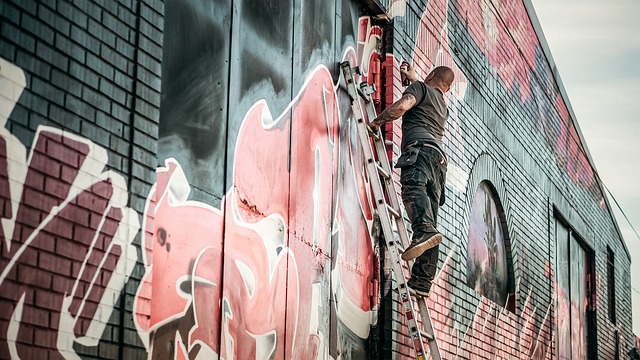# Reimagining Art: The Impact of AI on Traditional Techniques and the Future of Visual Storytelling
The intersection of technology and creativity has long been a fertile ground for innovation. In recent years, artificial intelligence (AI) has emerged as a transformative force in the world of art, reshaping traditional techniques and redefining the boundaries of visual storytelling. As artists and technologists collaborate, we are witnessing a profound evolution in how art is created, perceived, and experienced. This article explores the impact of AI on traditional artistic methods, its role in enhancing visual narratives, and the future implications for artists and audiences alike.
## The Integration of AI in Traditional Techniques
Traditionally, art has been a deeply personal and manual endeavor, rooted in the skills and techniques honed over years of practice. However, the advent of AI tools has begun to alter this landscape significantly. By leveraging machine learning algorithms, artists can now generate images, animations, and even music that push the limits of human creativity. Programs such as DeepArt and DALL-E allow creators to produce artwork by inputting simple prompts, which the AI then interprets and visualizes.
One notable example of this integration is the use of AI in painting. Artists are experimenting with neural networks that analyze existing artworks and generate new pieces based on learned styles. For instance, the AI can mimic the brushstrokes of Van Gogh or the color palettes of Monet, creating unique interpretations that blend traditional techniques with modern technology. This fusion not only broadens the scope of artistic expression but also challenges the notion of authorship, as the line between human creativity and machine-generated art becomes increasingly blurred.
Moreover, AI is enhancing the efficiency of traditional artistic processes. Techniques such as image recognition and style transfer allow artists to streamline their workflows, enabling them to focus on the conceptual aspects of their work. By automating repetitive tasks, AI tools free up valuable time for artists to explore new ideas and experiment with innovative approaches. This shift has the potential to democratize art-making, making it more accessible to those who may lack formal training but possess a desire to create.
## AI as a Catalyst for New Narratives
Beyond its influence on traditional techniques, AI is revolutionizing the way stories are told through visual art. The ability to analyze vast amounts of data and recognize patterns allows AI to craft narratives that resonate with audiences on a deeper level. Artists are increasingly utilizing AI-generated content to explore themes of identity, culture, and societal issues, resulting in rich, multifaceted storytelling experiences.
One of the most exciting developments in this realm is the emergence of interactive art installations powered by AI. These installations can adapt in real-time to audience interactions, creating a dynamic dialogue between the viewer and the artwork. For instance, an installation might use facial recognition technology to gauge the emotions of its audience, altering its visuals or soundscapes accordingly. This level of interactivity not only engages viewers but also invites them to become co-creators in the artistic experience, fostering a sense of connection and participation.
Furthermore, AI is enabling artists to explore new mediums and formats. Virtual reality (VR) and augmented reality (AR) are increasingly being integrated into artistic practices, allowing for immersive storytelling that transcends traditional boundaries. Artists can create virtual worlds that viewers can explore, offering a narrative experience that is both personal and expansive. By harnessing AI’s capabilities, these artists can build complex environments that react to user choices, leading to unique outcomes based on individual interactions.
## The Future of Art in an AI-Driven World
Looking ahead, the future of art in an AI-driven world presents both challenges and opportunities for artists and audiences. As AI continues to evolve, questions surrounding authenticity, originality, and the role of the artist will become increasingly relevant. While some may view AI as a threat to traditional artistry, others argue that it serves as a powerful tool that can enhance human creativity rather than replace it.
One significant consideration is the ethical implications of AI-generated art. The potential for copyright issues and the misuse of AI-generated content raises important questions about ownership and intellectual property. Artists and legal experts alike are grappling with how to navigate these complexities, ensuring that creators are recognized and compensated for their work, regardless of whether it is produced by human hands or machine algorithms.
In addition to these challenges, the integration of AI into the art world opens up new avenues for collaboration and innovation. Artists can partner with technologists to explore uncharted territories, experimenting with new forms of expression that blend human intuition with machine intelligence. This collaborative spirit has the potential to foster a vibrant artistic community that celebrates diversity, creativity, and the boundless possibilities of technology.
Ultimately, the impact of AI on traditional techniques and visual storytelling is profound and multifaceted. As artists continue to embrace AI as a partner in their creative processes, the art world will undoubtedly undergo a transformation that reflects the complexities of our modern society. By reimagining art through the lens of technology, we can anticipate a future rich with new narratives, innovative techniques, and an expanded understanding of what it means to create. As we stand on the precipice of this new era, one thing is clear: the dialogue between human creativity and artificial intelligence will shape the future of visual storytelling in ways we are only beginning to comprehend.

